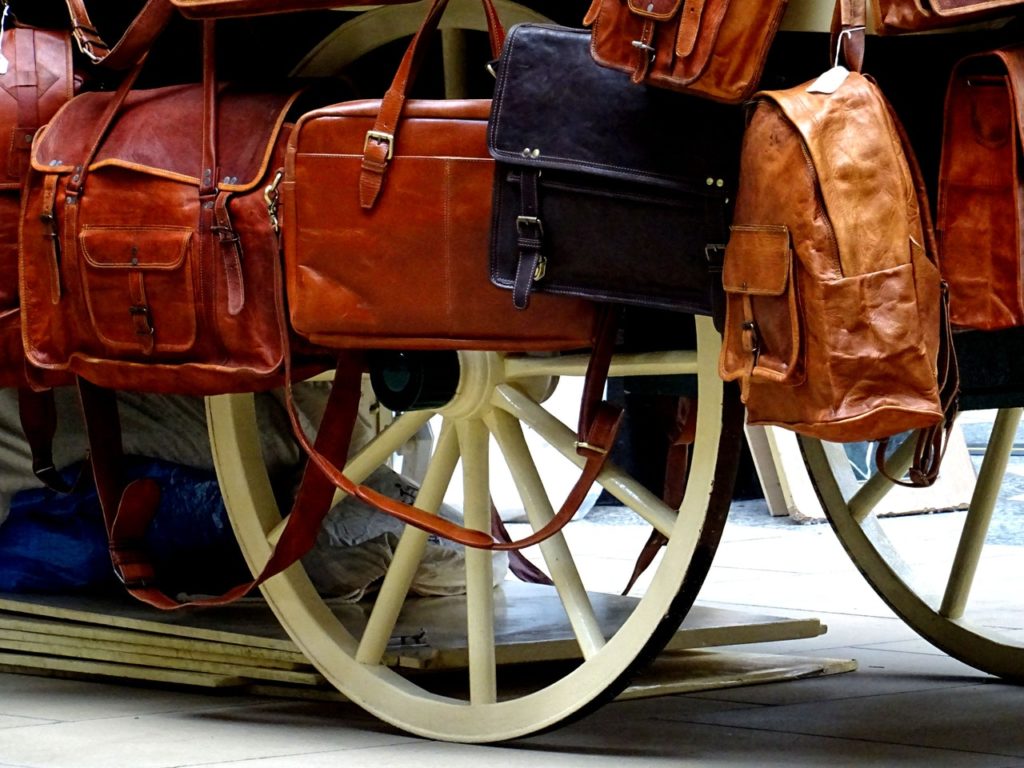I learned this today. Leather is strong because the collagen fibers in the animal skin are strengthened and bolstered by other chemicals. It can take up to ten weeks to make leather.
Making leather is a complicated process. The first thing is to remove the hide. The skin of any animal can be used to make leather, but the most common is cow skin. This is in part because of their size, but more likely because there are so many cow hides available. We would still use leather even if we didn’t slaughter so many cows, but about 800,000 cows are slaughtered a day for the beef industry, making cow leather very common.
A mammal skin has three layers: the epidermis, the corium, and a subcutaneous fatty layer. The epidermis is thin and is removed before the leather is made. The fatty layer is also removed because it would damage the leather. The corium is the layer used for the leather.
The corium is 70% water and 30% protein. Most of this protein is collagen, which is a fibrous protein held together by chemical bonds. The goal in leather production is to remove everything that is not collagen and strengthen the bonds between the collagen fibers.
Once the animal has been skinned, the flesh and fat is cleaned off. This has to be done quickly because it doesn’t take long for the flesh to start decomposing. Once the skin has been cleaned, it is packed in salt. Salt removes the water that bacteria use to break down the carbohydrates in the flesh, halting decomposition. This also removes a lot of the water from the hide.
The hide is sent to a tanning plant. There, it is first soaked in water to clean out all the salt and to replace a lot of the water that the salt drew out. After this the hide is soaked in a lime bath. Limewater is basically calcium hydroxide. This does several things. It removes the hairs by breaking down the bonds in the keratin in the hair. It removes all of the soluble proteins, leaving the collagen. It removes the fats. It swells the fibers. This can last for two days.
This soaking makes the hide swell up and then it is split into two pieces. The top piece has a tighter fiber structure, making it stronger and more durable. It will be used for higher quality leather products. The bottom piece is used for cheaper leathers, like shoes and bags.
After this, the leather is tanned. Tanning can take up to ten weeks and alters the protein structure of the skin. It makes it stronger and less likely to decompose. In the tanning process, the hide is soaked in a chemical that makes the collagen less water-soluble and more resistant to bacteria. Tanning used to be mainly done with tannins from bark and leaves. This is where the word “tanning” came from. Now it is more often done with chromium sulfate. The chromium sulfate gets between the protein chains and increases the spaces. It makes the skin flexible, strong and water resistant.
Next, the water is removed by rollers and the hides are graded. The leather is sometimes tanned again. Then, finally, the leather is stretched, and oils are added. This makes it more supple and protects it.
Humans have worn animal hides since we started hunting animals. The hide would usually be dried in the sun. The process of leather making probably goes back over 7000 years. Tanning was probably invented in Greece in 500 BC.
So, leather is strong and flexible because the collagen fibers in the skin are strengthened and stretched by tannins or chromium sulfate. This protects it and makes it less water-soluble and resistant to bacteria. It can take up to ten weeks to make leather.
Sources
https://www.britannica.com/topic/leather
https://www.mooreandgiles.com/leather/resources/history/
https://mahileather.com/blogs/news/how-is-leather-made
https://mahileather.com/blogs/news/a-brief-history-of-leather
https://www.one4leather.com/fact/fact-24
https://en.wikipedia.org/wiki/Tanning_(leather)

